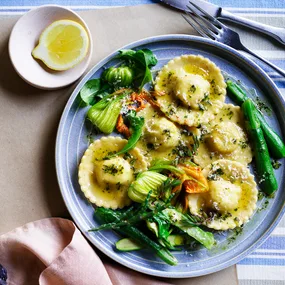I’ve often been involved in discussions about which dish best represents Brazil. It’s a tricky question. Ours is a very large and diverse country, with five radically different biomes, and a great many immigrant communities, the colonial Portuguese and slaves brought over from West Africa and Sudan notable among them. It’s no wonder the question of a national dish is a topic that stirs up a lot of emotions among Brazilians, and a definitive answer remains elusive.
But, for me, the dish that represents Brazil best is feijoada (fey-zhoo-ah-dah).A thick, steamy, hot, spicy stew of black beans and offcuts of pork, it’s inexpensive and eaten widely with gusto. It speaks of Brazil not only in the sense that, like this country, it’s a melting pot of cultures, but also because it can’t be cooked in small portions; you have to make a big pot of feijoada and gather your friends for a big meal. Yes, friends, the cliché is true: Brazilians really are always looking for a reason to party.
Then there’s the fact that there’s no standardised recipe – we gather what we have at our disposal and roll with it, and that’s very much in the spirit of jeitinho, the Brazilian way of getting a job done, regardless of what the rules may say.
The best-known story of feijoada’s origin is that it was created by the slaves. Beans are cheap, and were a popular food in West Africa, and the only meat available to the slaves would have been offcuts: ears, feet, ribs, and the like. It was a dish designed to feed and fill up many people at a time, something that could readily be stretched out with the addition of whatever was to hand. It’s also reminiscent of many dishes from Portugal, France and Spain, almost like a tropical adaptation of the cassoulet or the Portuguese favada – something, perhaps, that recalled home for the Europeans.
The stew should have a meaty, smoky and slightly salty flavour (smoked ribs, smoked sausage and smoked bacon are all welcome additions). Most important is the texture all those ears and trotters contribute a lot of collagen, so the stew should have a gluey feel, almost sticking to your lips as you eat. For me, the difference between a good feijoada and a great one comes down to the thickness of the stew and quality of the trimmings – sautéed kale, pork scratchings, farofa (toasted manioc, or cassava flour), with orange segments and the vinaigrette for freshness.
Unlike such international culinary cultural ambassadors as sushi, ceviche, pizza or even a good burger, feijoada hasn’t travelled the world. Perhaps it’s because, despite being a simple dish to prepare, it is almost a ceremony. It takes hours, if not days, to prepare, and no one does it alone. It’s a process where people start the party during the cooking. The most traditional day to serve it is Saturday lunch, so we start on the Friday night, and drink a lot of Caipirinhas and cold beer with crunchy pork scratchings while we cook, and then we start the beans early Saturday morning.
The preparation and serving of feijoada are all part of the same good time, shared by everybody in the kitchen and at the table. It’s a whole-day dish. We’ll have some feijoada, go away, have a nap, come back and have some more, right into the evening.
Regardless of its origins, the truth is that feijoada is a dish that makes people happy. It’s flavourful and appreciated by the rich and poor alike, breaking down all sorts of social barriers. It’s a dish that anyone can eat at any time, it’s loved by everyone, and in times of so much difference, it gives people reason to gather and enjoy some time together, as any good meal should.
A melting pot of cultures that’s made for a party, this national favourite speaks eloquently of Brazil, writes leading São Paulo chef Alberto Landgraf.
Ingredients
Method
Main
Black turtle beans are available from Asian supermarkets and online at Monterey Mexican Foods (montereyfoods.com.au). Pig’s ears and trotters may need to be ordered ahead from a butcher; ask your butcher to split the trotters for you. Pork scratchings are available from Asian supermarkets.
Notes










